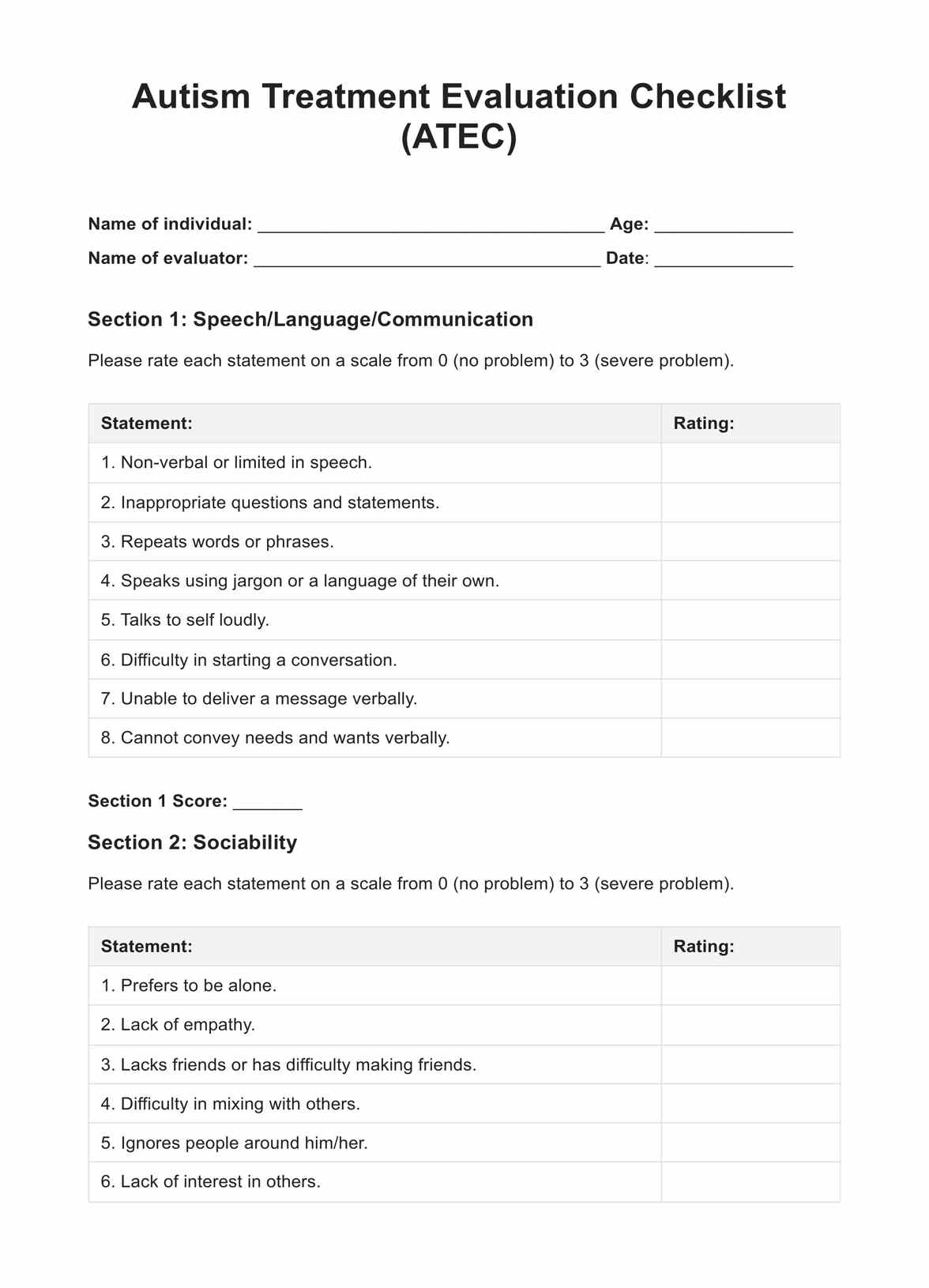Completing the ATEC usually takes about 15 minutes, but this can vary depending on the individual's symptom complexity.

Autism Treatment Evaluation Checklist (ATEC)
Discover how the Autism Treatment Evaluation Checklist (ATEC) can effectively track progress in autism treatments—a reliable tool for healthcare professionals.
Use Template
Autism Treatment Evaluation Checklist (ATEC) Template
Commonly asked questions
The scores from each ATEC subtest are totaled. Lower scores indicate fewer autistic traits, suggesting the individual's condition is improving.
The ATEC is used when starting a new treatment for autism to measure its effectiveness over time.
EHR and practice management software
Get started for free
*No credit card required
Free
$0/usd
Unlimited clients
Telehealth
1GB of storage
Client portal text
Automated billing and online payments











